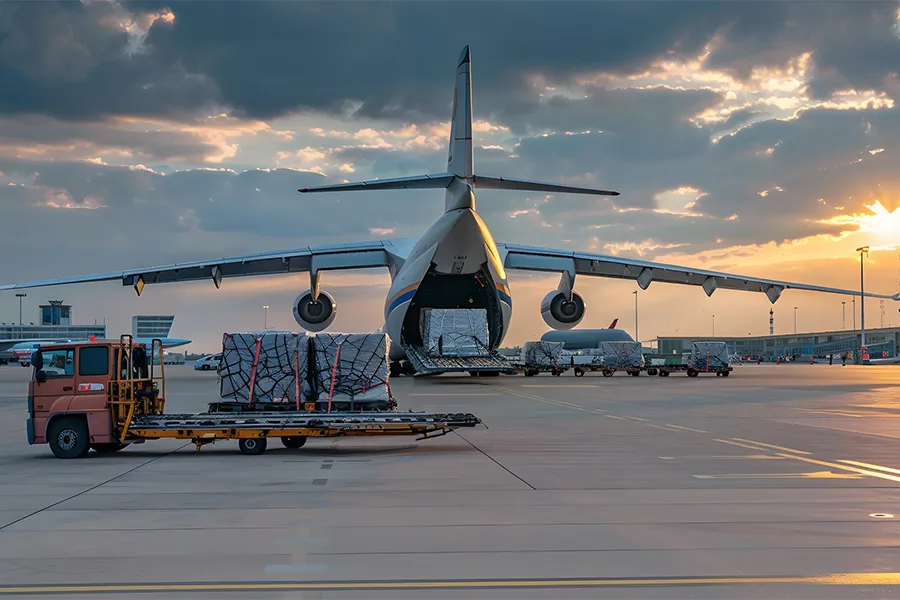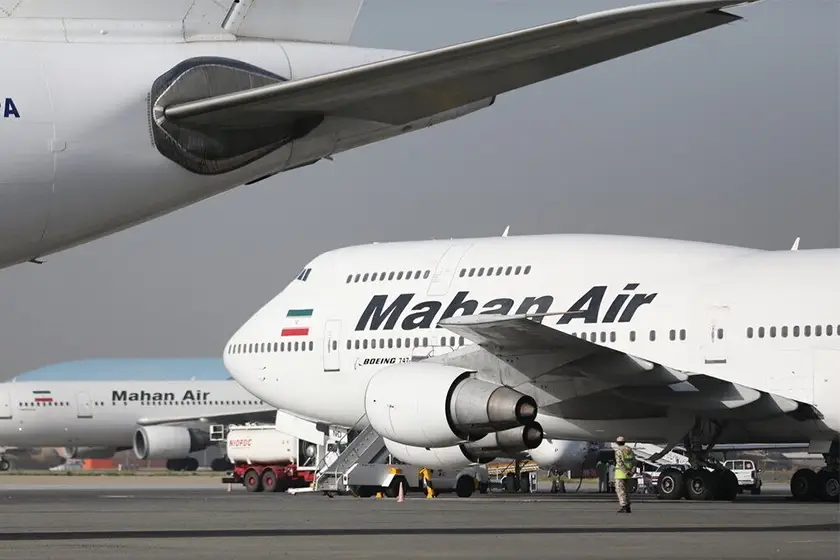Customs clearance at Imam Khomeini Airport is one of the important steps in the process of importing goods to Iran via air transport. This process may seem complicated, but by familiarizing yourself with the required documents and its legal steps, you can easily go through it. In this article, we have thoroughly reviewed the documents required for customs clearance, customs procedures, and laws related to air cargo clearance at Imam Khomeini Airport. If you also plan to import goods, phones, etc. to Iran, by reading this article, you can become familiar with important tips and information and easily complete the process of clearing your goods.
Air Cargo Clearance
Air cargo clearance refers to the clearance of imported goods by air transport. Many goods, such as high-value, sensitive, perishable goods, or goods that require rapid handling and special conditions, are transported by air. Air cargo clearance is usually faster than sea or road transport and has a great advantage in this regard, but air cargo clearance will have higher customs fees, warehousing costs, and freight costs than other methods of transportation.
Air cargo clearance includes steps to register, review, and approve goods by customs, which we will explain in more detail later in this article.

Documents Required for Air Cargo Clearance from Imam Khomeini Airport
To clear goods from Imam Khomeini Airport, you need to provide specific documents and documentation to be reviewed and approved by customs. The documents required for clearance and passage of goods from the border into the country may vary depending on the type and characteristics of the goods, but the necessary documents that need to be provided include the following:
- Bill of Lading
- Warehouse Receipt
- Certificate of Origin
- Packing List
- Trader Invoice
- Proforma Invoice
- Import Permit
- Customs Declaration
- Document of Foreign Exchange Supply from a reputable bank
- Customs Label and Payment Receipt
- Image of Business Card and National ID Card
- Health and Hygiene Certificate for Sensitive Goods such as Food or Pharmaceuticals
Customs clearance steps at Imam Khomeini Airport
As one of the important import processes, air cargo clearance from Imam Khomeini Airport has specific steps, which we will get to know about below:
Registering an order and obtaining an import permit
The first step for goods clearance is to register an import order through the Comprehensive Trade System, or order registration in the NTSW system. After registering the order, you must obtain the necessary permits for importing goods from the relevant authorities, such as the Ministry of Industry, Mines and Trade. This step is necessary to ensure the legality of the goods’ entry.
Receiving a bill of lading
After the bill of lading is issued by the air transport company, you must receive it from the relevant company and prepare its information for the next steps of clearance. This document is necessary to identify the goods at customs.
Submitting documents and customs declaration
At this stage, you must submit the required documents to customs, including a commercial invoice, bill of lading, certificate of origin, proforma invoice, and other documentation. You must also complete and submit a customs declaration, including detailed information about the goods, their value, and type, to customs. Preparing and submitting documents on time will prevent delays and potential problems in the clearance process.
Paying Customs Duties and Taxes
After evaluating and approving the goods, you must pay the customs duties and taxes related to the goods. The amount of these fees is calculated based on the type and value of the goods. After payment, a payment receipt is issued that you must submit to customs.

Receiving Approval and Clearing the Goods
After receiving the documents, the customs thoroughly examine the goods for compliance with the information and documents provided and conducts the necessary health, safety or technical tests, especially for special goods such as food and pharmaceuticals. After assessing the quality and thoroughly examining the goods, the customs label and other documents related to the clearance of the goods are issued by the customs.
Clearing the goods from customs
Finally, after receiving the customs label and paying the fees including warehousing costs, unloading and loading costs, insurance of the goods, etc., the goods are ready to be delivered to the owner of the goods or its importer. The goods can be transferred by the importer or his representative from the customs of Imam Khomeini Airport and sent to the final destination.
After going through these steps, the air cargo is legally and without any problems cleared from Imam Khomeini Airport customs. It is better to archive the import-related documents after clearance, as they are necessary for any future legal investigations or proceedings.
Imam Khomeini Airport Customs Clearance Rules
Clearance of goods from Imam Khomeini Airport is carried out under specific rules and regulations, which are better to be familiar with in order to avoid legal problems and expedite the clearance process. Compliance with these rules not only helps speed up clearance, but also prevents possible legal and tax problems. Below, we have explained the most important rules and regulations for clearance of goods from Imam Khomeini Airport:
- Compliance with import and export laws
The first and most important rule for clearance is compliance with the country’s import and export laws. Importing any goods into Iran must be carried out in accordance with the rules and regulations of the Ministry of Industry, Mines and Trade (SMT) and other regulatory bodies such as the Standards Organization and the Ministry of Health. Importers must ensure that imported goods are authorized and comply with national and international standards.
- Non-clearance of prohibited goods
According to customs laws, certain goods such as narcotics, weapons, incendiary and explosive materials, publications, films and images contrary to Islamic customs and custom, and other prohibited items cannot be cleared through Imam Khomeini Airport Customs. Importers must ensure that their imported goods are not subject to import prohibitions.
- Post-clearance monitoring and control process
After clearance of goods, customs and regulatory agencies may request importers to provide additional documents or information regarding the goods and how they were imported. Importers are required to provide this information upon request to avoid legal issues.
- Clearance by Legal Representative
Importers can use legal representatives, such as clearance companies or customs brokers, to facilitate the clearance process of air cargo from Imam Khomeini Airport Customs. These representatives are responsible for all matters related to clearance of goods.

Conclusion
Customs clearance at Imam Khomeini Airport has various rules and stages that have been discussed in this article. You can easily complete the air cargo clearance process by being aware of the rules and providing the required documents and permits, but using the services of a specialized and professional company can help facilitate and expedite the clearance of air cargo.
As a representative of Saman Express, with extensive experience in customs and air cargo clearance, Saina Express is ready to help you complete this process as quickly and without worries as possible. Our professional team, with a complete understanding of customs regulations and processes, can provide you with the best solutions for air cargo clearance.

